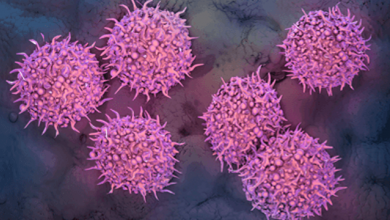Search results
Author(s):
Gianfranco Sinagra
,
Michele Moretti
,
Giancarlo Vitrella
,
et al
Added:
3 years ago
According to the latest position statement of the European Society of Cardiology (ESC), cardiomyopathies (CMP) are defined as “myocardial disorders in which the heart muscle is structurally and functionally abnormal, in the absence of coronary artery disease, hypertension, valvular disease and congenital heart disease sufficient to cause the observed myocardial abnormality”.1
CMP may be…
View more
Author(s):
Peter P Swoboda
,
Adam K McDiarmid
,
Stephen P Page
,
et al
Added:
3 years ago
Inherited cardiomyopathies are primary disorders of the heart muscle that have a genetic basis. On long-term follow-up they are associated with adverse outcomes, particularly sudden death, arrhythmia and heart failure.1 The diagnosis is made on the basis of clinical, cardiac imaging (primarily with transthoracic echocardiography) and genetic features,2 ideally by a tertiary inherited cardiac…
View more
Author(s):
Erwin Oechslin
,
Rolf Jenni
Added:
3 years ago
Non-compaction of the myocardium is gaining prominence as a rare, distinct cardiomyopathy characterised by the presence of numerous, excessive prominent trabeculations and deep intertrabecular recesses which communicate with the left ventricular cavity. Two decades of research have identified a new disease - firstly, its morphologic and clinical characteristics were described on clinical…
View more
Author(s):
Erwin Oechslin
,
Rolf Jenni
Added:
3 years ago
Non-compaction of the myocardium is gaining prominence as a rare, distinct cardiomyopathy characterised by the presence of numerous, excessive prominent trabeculations and deep intertrabecular recesses which communicate with the left ventricular cavity. Two decades of research have identified a new disease - firstly, its morphologic and clinical characteristics were described on clinical…
View more
Author(s):
Shu Nakao
,
Dai Ihara
,
Koji Hasegawa
,
et al
Added:
3 years ago
Induced Pluripotent Stem Cells and Their Potential Applications
Induced pluripotent stem cells (iPSCs) are generated from somatic cells, such as skin fibroblasts, by ectopic expression of defined reprogramming factors. Within a few years of the first report of the generation of mouse iPSCs, several laboratories reportedly reproduced these cells using other cell types and species using similar…
View more
Hidden in Heart Failure
Author(s):
Douglas Ewan Cannie
,
Mohammed Majid Akhtar
,
Perry Elliott
Added:
3 years ago
Article
Added:
6 months ago
Source:
AHA, Jordan Rance
The American Heart Association has announced eight late-breaking science sessions to be presented in Philadelphia from November 10th to November 13th. AHA is focussed on innovation in cardiovascular disease for scientists, clinicians, researchers and other healthcare professionals.
Among the event’s highlights are eight late-breaking trial sessions, as listed below.
Watch our coverage of…
View more
Author(s):
Alessandro Marinelli
,
Mario Luzi
,
Alessandro Capucci
Added:
3 years ago
Several randomised controlled trials (RCTs) have proven the efficacy of the implantable cardioverter-defibrillator (ICD) in preventing sudden cardiac death (SCD) in patients with advanced systolic heart failure (HF) and reduced left ventricular ejection fraction (LVEF).1–3 ICD therapy proved to be efficacious also in other conditions at high risk for arrhythmic death such as familial SCD…
View more
Author(s):
Alexandros Protonotarios
,
Perry Elliott
Added:
3 years ago
Until the 20th century, conventional medicine relied almost exclusively on observable characteristics to classify and treat human disease.1 Even in the modern era, physicians define diseases using phenotypic similarities and employ relatively simple algorithms to interpret diagnostic tools and plan treatment. The advent of low-cost genetic sequencing and its introduction into clinical care…
View more
Sudden Cardiac Death in Athletes
Author(s):
Andrew D’Silva
,
Michael Papadakis
Added:
3 years ago
Article














